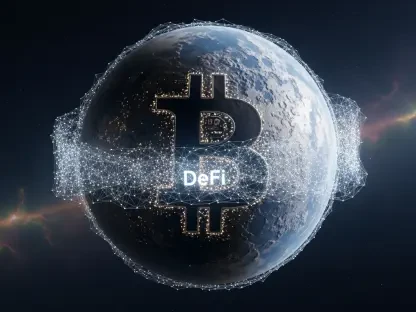Imagine a digital economy where blockchain transactions are as fast and cost-effective as sending an email, yet the technology struggles to keep pace with growing demand, creating significant hurdles for widespread adoption. Scalability remains one of the most pressing challenges in the blockchain space, with networks often bogged down by high fees and slow processing times. This roundup dives into the recent mainnet launch of Boundless, a project heralded as a game-changer in addressing these bottlenecks. By gathering opinions, tips, and reviews from various industry voices, this discussion aims to unpack how Boundless redefines scalability through innovative approaches like verifiable computation and unique economic models.
Exploring Boundless: A Turning Point in Blockchain Growth
The launch of Boundless’ mainnet on September 15 marks a significant milestone, transitioning the project from beta to full production. Many industry observers view this as a critical step toward solving long-standing scalability issues. With a focus on mirroring the internet’s scaling model, Boundless introduces a protocol that prioritizes verifiable computation, drawing attention from developers and businesses alike for its potential to transform blockchain efficiency.
Feedback from tech analysts highlights the urgency of scalable solutions in an era where digital transactions are integral to global economies. The consensus points to Boundless’ beta phase success—with over 2,500 provers and 411,000 participants—as evidence of its early promise. Some suggest that this launch could set a new standard for how blockchain networks handle growth, though opinions vary on the practicality of its widespread adoption.
A recurring theme among commentators is curiosity about Boundless’ distinct mechanisms, such as Proof of Verifiable Work. This shift away from traditional, energy-heavy mining processes has sparked both excitement and debate. The following sections delve into diverse perspectives on how these innovations are perceived across the blockchain community.
Breaking Down Boundless’ Scalability Innovations
Revolutionizing Computation with Proof of Verifiable Work
A key feature of Boundless that garners significant attention is its move from conventional proof-of-work to Proof of Verifiable Work. Industry developers note that this model rewards provers for generating zero-knowledge proofs, a concept inspired by advancements in accessible programming tools since around 2025. Many see this as a sustainable alternative to resource-intensive mining, potentially reducing environmental impact while boosting network capacity.
Blockchain architects have praised the early results from Boundless’ beta phase, pointing to the $71 million raised in the Kaito token sale as a strong indicator of market confidence. However, some caution that replacing established systems carries risks. Questions linger about whether this approach can maintain robust security and decentralization as the network scales, with a few experts calling for more long-term data to validate its effectiveness.
Differing views also emerge on the learning curve for developers adapting to this framework. While some appreciate the use of familiar languages like Rust for creating proofs, others argue that the transition might deter smaller teams lacking specialized expertise. This debate underscores a broader uncertainty about balancing innovation with accessibility in blockchain design.
ZK Coin (ZKC) as a Driver of Economic Incentives
The role of ZK Coin (ZKC) in Boundless’ ecosystem is another focal point of discussion. Economists in the crypto space describe ZKC as a novel way to incentivize useful computation, with rewards tied to the complexity of cryptographic proofs. This creates a market dynamic where computational value directly influences economic activity, a concept many find refreshing compared to traditional token models.
Analysts highlight the staking mechanism, where provers lock ZKC as collateral, as a dual-purpose tool for enhancing security and regulating token supply. Yet, market watchers raise concerns over ZKC’s price volatility, noting a sharp 55% drop from $2.13 to $0.86. Some argue that such fluctuations could discourage prover participation, potentially stunting network growth if not addressed through stabilizing mechanisms.
Opinions split on how this volatility impacts long-term viability. While certain financial experts see it as a typical early-stage challenge for new tokens, others warn that sustained price instability might undermine trust in the system. This diversity of thought reflects the complexity of integrating economic incentives with technical scalability.
Universal Verifiable Compute for Cross-Chain Scaling
Boundless’ ambition to apply verifiable computation across various blockchains and applications draws mixed reactions. Tech strategists commend the vision of positioning computation as a foundational layer for scalability, aligning with industry trends toward cross-chain interoperability. Collaborative efforts since late 2024 are often cited as a strength, showcasing a protocol designed with broad compatibility in mind.
However, some integration specialists question whether computation alone can address all scalability hurdles. Challenges in merging with existing blockchain infrastructures are frequently mentioned, with a few voices suggesting that developer adoption rates might lag if the process proves overly complex. This skepticism contrasts with the optimism surrounding Boundless’ potential to unify disparate networks.
Another angle of discussion focuses on practical implementation. While larger blockchain projects might readily adapt to Boundless’ framework, smaller ecosystems could struggle with resource constraints, according to some consultants. This disparity in readiness fuels ongoing conversations about how universal solutions can cater to diverse needs without leaving segments of the industry behind.
Community and Developer Support Fueling Momentum
The collaborative energy behind Boundless, especially evident in community engagement during the beta phase, is widely recognized as a driving force. Social media discussions among crypto enthusiasts often emphasize the impressive early adoption numbers, viewing them as a testament to grassroots support. Many believe this collective spirit could shape future governance or feature updates in meaningful ways.
Comparisons to other blockchain initiatives reveal a unique strength in Boundless’ community-driven approach. Unlike projects that rely heavily on top-down development, feedback loops with users and developers are seen as integral to its evolution, according to forum posts and panel discussions. This participatory model is frequently highlighted as a blueprint for fostering trust and innovation.
Beyond numbers, the human element of Boundless’ journey stands out in expert reviews. Stories of small-scale developers contributing to the protocol’s growth are often shared as evidence of an inclusive ecosystem. Such narratives add depth to the technical discourse, illustrating how social dynamics can amplify a project’s impact in ways that pure data cannot capture.
Key Takeaways from Boundless’ Scalability Model
Synthesizing the varied insights, several core strengths of Boundless emerge, notably its emphasis on computational utility through Proof of Verifiable Work and the economic framework of ZKC. Blockchain consultants often point to these as pioneering steps that could inspire other networks to rethink scalability. Yet, there’s agreement that market dynamics, like ZKC’s price swings, pose notable risks that warrant close monitoring.
For developers and businesses, practical tips include exploring roles as provers to engage directly with the ecosystem or leveraging Boundless’ cross-chain capabilities for application development. Industry blogs frequently recommend starting with pilot integrations to test compatibility before full commitment. This cautious approach balances enthusiasm with the need to navigate uncharted territory.
Staying informed is also a common piece of advice across sources. Joining community forums or tracking ZKC market trends offers valuable insights for potential investors or participants. Many commentators stress the importance of ongoing dialogue within the blockchain space to address emerging challenges and refine scalable solutions collaboratively.
Reflecting on Boundless’ Impact and Path Forward
Looking back, the discourse around Boundless revealed a shared excitement for its potential to redefine blockchain scalability through verifiable computation and innovative economics. The range of opinions—from optimism about its technical advancements to caution over market volatility—painted a nuanced picture of a project at a pivotal moment. Community support and early traction stood out as key drivers that shaped its journey.
Moving forward, stakeholders can take actionable steps by diving deeper into Boundless’ documentation to understand its protocols or participating in developer workshops to build on its framework. Monitoring how the network evolves in response to economic challenges like ZKC’s price instability will be crucial. These efforts can help solidify Boundless’ role as a leader in scalable blockchain design, paving the way for broader industry advancements.









